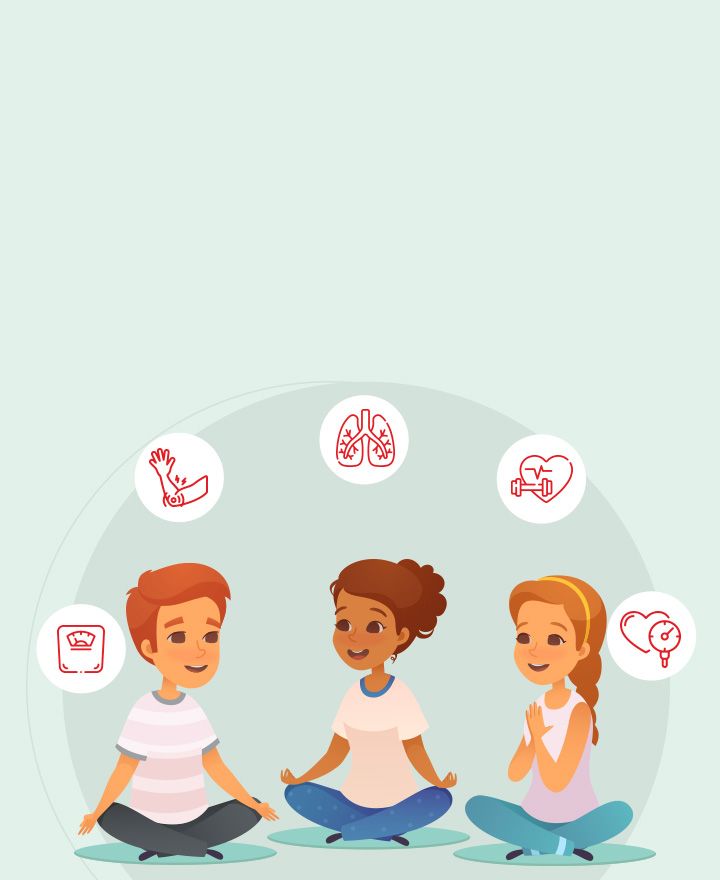

What Are 5 Types of Pneumonia?
Pneumonia is a common respiratory infection affecting millions worldwide each year. While most cases are mild and can be treated at home, pneumonia can sometimes be severe. Understanding the different types of pneumonia is crucial for proper diagnosis and treatment. Read on to know more.
Types of Pneumonia
The most common 5 types of Pneumonia are:
1. Community-Acquired Pneumonia (CAP)
• Commonly contracted outside healthcare settings.
• Caused by bacteria, viruses, fungi, or other microbes.
• Symptoms include fever, cough, chest pain, and difficulty breathing.
• Treatable with antibiotics if bacterial; antivirals or antifungals for other causes.
2. Aspiration Pneumonia
• It occurs when foreign substances, such as food, drink, saliva, or vomit, are inhaled into the lungs.
• Common in individuals with swallowing difficulties, impaired consciousness, or weakened gag reflex.
• Symptoms may include coughing, fever, chest pain, and difficulty breathing.
• Treatment involves addressing the underlying cause and may include antibiotics if bacterial infection is present.
3. Atypical Pneumonia (Walking Pneumonia)
• Often caused by bacteria such as Mycoplasma pneumoniae, Chlamydophila pneumoniae, or viruses.
• Symptoms are milder compared to typical pneumonia and may include low-grade fever, dry cough, fatigue, and sore throat.
• Patients can typically function despite illness; hence, the term "walking pneumonia."
4. Viral Pneumonia
• It is caused by various viruses, including influenza, respiratory syncytial virus (RSV), and adenovirus.
• Symptoms may resemble those of bacterial pneumonia but tend to develop more gradually.
• It can lead to severe complications, especially in young children, the elderly, and those with weakened immune systems.
5. Bacterial Pneumonia
• The most common type of pneumonia is caused by bacteria such as Streptococcus pneumoniae, Haemophilus influenzae, and Legionella pneumophila.
• Symptoms often include high fever, productive cough with green or yellow mucus, chest pain, and difficulty breathing.
• Prompt antibiotic treatment is essential to prevent complications and speed recovery.
Prevention of Pneumonia
This includes:
• Vaccination against common pathogens like Streptococcus pneumoniae and influenza is crucial for preventing pneumonia.
• Practicing good hand hygiene by washing hands frequently with soap and water or using alcohol-based hand sanitizers can help reduce the spread of germs.
• Quit smoking and avoid exposure to secondhand smoke as it can help maintain healthy lung function and reduce susceptibility to respiratory infections.
• Maintain a healthy lifestyle with regular exercise, balanced nutrition, and adequate rest as this can help bolster the immune system and decrease the likelihood of developing pneumonia.
Conclusion
Understanding the 5 types of pneumonia is crucial for both healthcare professionals and the general public. While the symptoms may overlap, the underlying causes and treatments differ significantly. Prompt diagnosis and appropriate treatment can help prevent complications and promote faster recovery.
One of the important components of our overall wellness is also being financially secured. Healthcare emergencies can happen any time, but a good health insurance policy can protect you from such uncertain situations. To know more about Wellness and other health related tips, visit the wellness corner.
Source: health.com, metropolisindia.com, nhlbi.nih.gov
Disclaimer: This blog provides general information and discussions about health and related subjects. The information and other content provided in this blog, website or in any linked materials are not intended and should not be considered, or used as a substitute for, medical advice, diagnosis or treatment. Kindly contact your Doctor before starting a new medicine or health regime.
Related Articles
Can You Die from Pneumonia - What You Need to Know
Published on May 10, 2024














 Health Insurance
Health Insurance  Travel Insurance
Travel Insurance  Car Insurance
Car Insurance  Cyber Insurance
Cyber Insurance  Critical Illness Insurance
Critical Illness Insurance
 Pet Insurance
Pet Insurance
 Bike/Two Wheeler Insurance
Bike/Two Wheeler Insurance  Home Insurance
Home Insurance  Third Party Vehicle Ins.
Third Party Vehicle Ins.  Tractor Insurance
Tractor Insurance  Goods Carrying Vehicle Ins.
Goods Carrying Vehicle Ins.  Passenger Carrying Vehicle Ins.
Passenger Carrying Vehicle Ins.  Compulsory Personal Accident Insurance
Compulsory Personal Accident Insurance  Travel Insurance
Travel Insurance  Rural
Rural